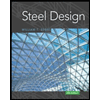a) Following results are obtained in a series of CU triaxial tests on saturated samples of a clay. Calculate the effective shear strength parameters (c' and ') and plotting the Mohr- Coulomb failure envelope. (Hint: you can first plot the top points of the circles in q=(01-03)/2 vs. p=(003)/2 space.) Test number Confining (cell) Pressure (kPa) Deviator stress (1-03) (kPa) Pore pressure before shear (kPa) Pore water pressure at failure (kPa) 1 400 120 300 320 2 400 210 200 260 3 550 270 250 235
a) Following results are obtained in a series of CU triaxial tests on saturated samples of a clay. Calculate the effective shear strength parameters (c' and ') and plotting the Mohr- Coulomb failure envelope. (Hint: you can first plot the top points of the circles in q=(01-03)/2 vs. p=(003)/2 space.) Test number Confining (cell) Pressure (kPa) Deviator stress (1-03) (kPa) Pore pressure before shear (kPa) Pore water pressure at failure (kPa) 1 400 120 300 320 2 400 210 200 260 3 550 270 250 235
Principles of Geotechnical Engineering (MindTap Course List)
9th Edition
ISBN:9781305970939
Author:Braja M. Das, Khaled Sobhan
Publisher:Braja M. Das, Khaled Sobhan
Chapter10: Stresses In A Soil Mass
Section: Chapter Questions
Problem 10.2P
Related questions
Concept explainers
Question

Transcribed Image Text:a) Following results are obtained in a series of CU triaxial tests on saturated samples of a
clay. Calculate the effective shear strength parameters (c' and ') and plotting the Mohr-
Coulomb failure envelope. (Hint: you can first plot the top points of the circles in
q=(01-03)/2 vs. p=(₁03)/2 space.)
Test number
Confining (cell) Pressure (kPa)
Deviator stress (01-03) (kPa)
Pore pressure before shear (kPa)
Pore water pressure at failure (kPa)
●
1
400
120
300
320
2
400
210
200
260
3
550
270
250
235
b) If we carry out a consolidated drained triaxial test on a specimen taken from the same clay
(assume same c', '), what would be the deviator force at failure in a specimen that is
consolidated under an isotropic stress of 240 kPa and pore pressure of 300 kPa. The
specimen was initially 5 cm in diameter and 10 cm in height. Peak strength (i.e. failure) is
reached at axial strain of 4% and volumetric strain of 2% in compression.
Hints: the pore pressure is initial pore water pressure
Expert Solution
This question has been solved!
Explore an expertly crafted, step-by-step solution for a thorough understanding of key concepts.
This is a popular solution!
Trending now
This is a popular solution!
Step by step
Solved in 6 steps with 10 images

Knowledge Booster
Learn more about
Need a deep-dive on the concept behind this application? Look no further. Learn more about this topic, civil-engineering and related others by exploring similar questions and additional content below.Recommended textbooks for you

Principles of Geotechnical Engineering (MindTap C…
Civil Engineering
ISBN:
9781305970939
Author:
Braja M. Das, Khaled Sobhan
Publisher:
Cengage Learning

Principles of Foundation Engineering (MindTap Cou…
Civil Engineering
ISBN:
9781337705028
Author:
Braja M. Das, Nagaratnam Sivakugan
Publisher:
Cengage Learning

Fundamentals of Geotechnical Engineering (MindTap…
Civil Engineering
ISBN:
9781305635180
Author:
Braja M. Das, Nagaratnam Sivakugan
Publisher:
Cengage Learning

Principles of Geotechnical Engineering (MindTap C…
Civil Engineering
ISBN:
9781305970939
Author:
Braja M. Das, Khaled Sobhan
Publisher:
Cengage Learning

Principles of Foundation Engineering (MindTap Cou…
Civil Engineering
ISBN:
9781337705028
Author:
Braja M. Das, Nagaratnam Sivakugan
Publisher:
Cengage Learning

Fundamentals of Geotechnical Engineering (MindTap…
Civil Engineering
ISBN:
9781305635180
Author:
Braja M. Das, Nagaratnam Sivakugan
Publisher:
Cengage Learning

Materials Science And Engineering Properties
Civil Engineering
ISBN:
9781111988609
Author:
Charles Gilmore
Publisher:
Cengage Learning

Principles of Foundation Engineering (MindTap Cou…
Civil Engineering
ISBN:
9781305081550
Author:
Braja M. Das
Publisher:
Cengage Learning

Steel Design (Activate Learning with these NEW ti…
Civil Engineering
ISBN:
9781337094740
Author:
Segui, William T.
Publisher:
Cengage Learning